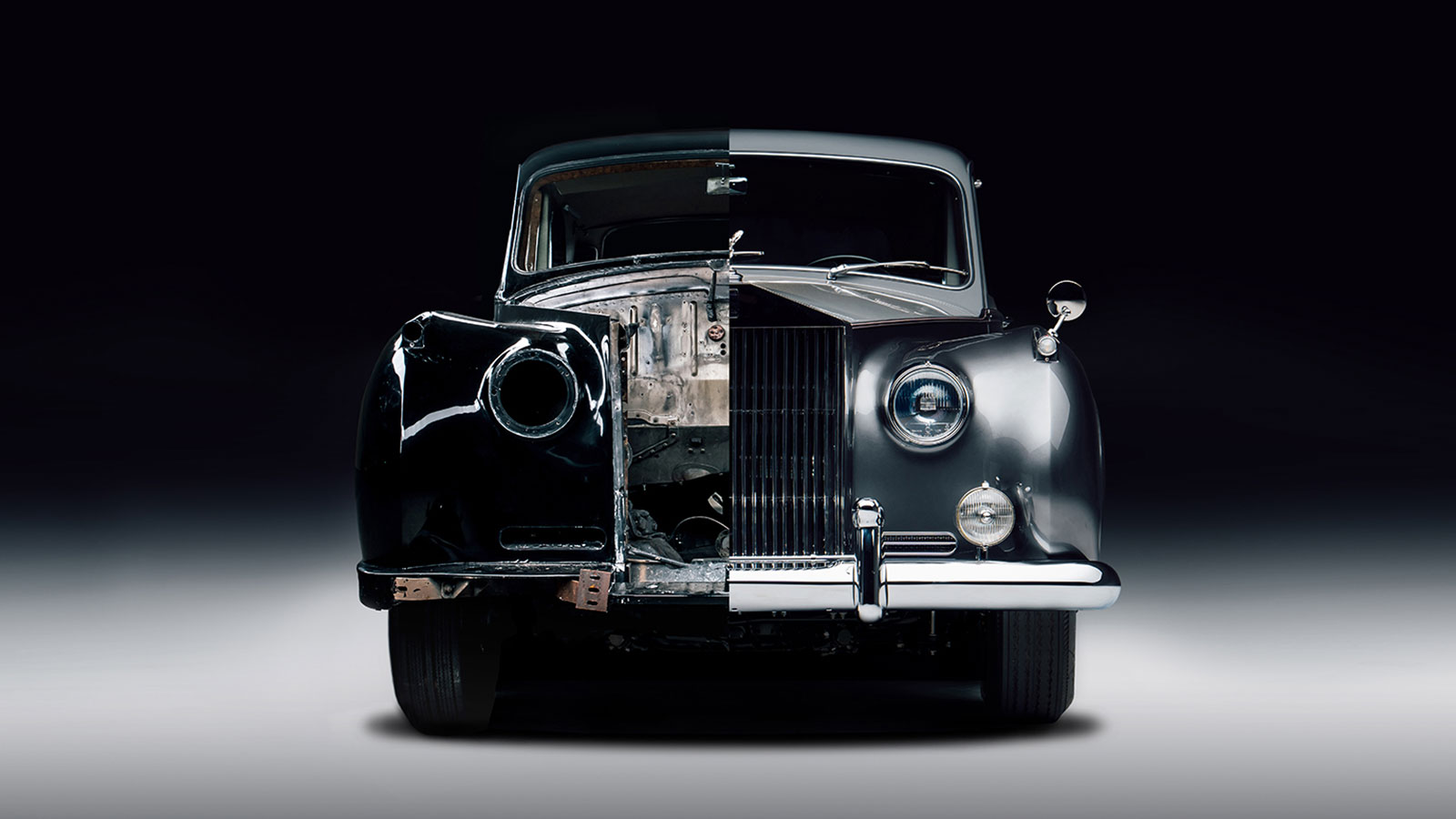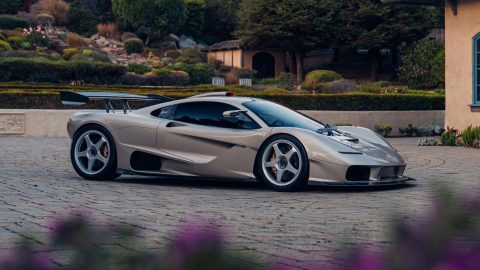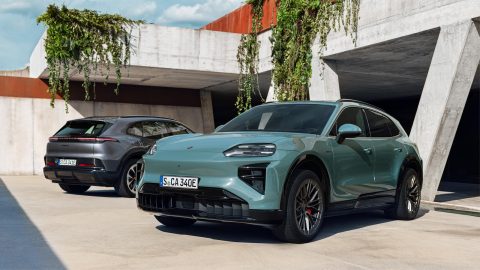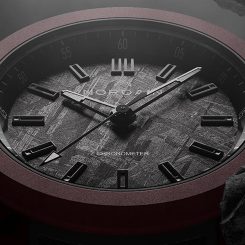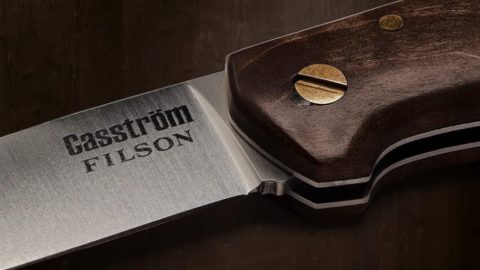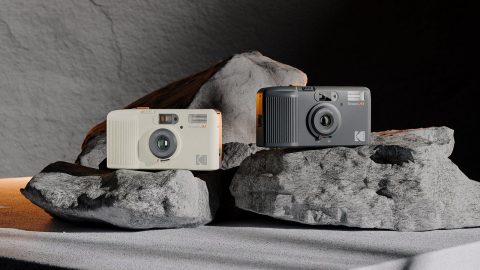You often hear the word “restomod” being used to describe vintage vehicles restored with modern parts. But a set of disc brakes is not enough to turn a 60s muscle car into a restomod. The same way a louder exhaust pipe doesn’t turn a Honda Civic into a tuner. There are degrees to this aftermarket world, so what exactly is a restomod?
Restomods Teach Old Cars New Tricks
Think of a restomod as a cocktail. Any refreshing cocktail starts with liquor (tequila, vodka, whiskey). Just like with classic cars, some people may argue that aged scotch in a crystal glass or ice-cold draft beer is all they need to enjoy an extended happy hour, but that may often be too harsh for some drinkers to handle. Alcohol doesn’t become a cocktail until you add fruit, sugar, salt, juice, or soda to smooth out the flavor and improve the taste. Sometimes a little soda, lime, and a dash of salt can turn a drink into a beverage the same way a new set of brakes, suspension, and fuel injection can turn a classic car into a restomod.
The constant debate within the automotive community is where to draw the line when it comes to restoring vintage vehicles. A fair number of car-enthusiasts like to restore and maintain classic cars back to the same condition as they left the assembly line. Why? Because they don’t make ’em like they used to. Driving an original classic car can be the closest thing to riding in a time machine while living in the moment.
A fair number of car-enthusiasts like to restore and maintain classic cars back to the same condition as they left the assembly line. Why? Because they don’t make ’em like they used to.
Driving a classic car in modern-day traffic comes with an undertone of danger as older vehicles often lack safety features we’ve taken for granted. Basic safety features like Anti-lock brakes, airbags, shoulder mount seat-belts, LED lights, and heaven forbid not having an aux port. Danger can be alluring that adds to the thrill of the experience.
Anyone who has driven an old car will tell you that it can be nerve-racking seeing multiple lanes of oversized vehicles being driven by distracted drivers. It’s a constant reminder that just because an old car is made out of steel doesn’t mean it won’t fold like a tin can in an accident, and being fully aware that the steel drum brakes were built in an era when a stopping distance of 200 feet was considered good. Restomods came about from the necessity to give an old car some new tricks to better handle the faster modern road.
How to Build a Restomod
A restomod car can be built to a variety of degrees, but the end goal is always the same – restore and modify. The modified half of the equation means upgrading components to improve safety, handling, and performance. These modifications can mean swapping old fashion drums for disc brakes, ditching old seat-belts for a safety harness, installing a modern engine, and/or other critical components.
So how does one buy a restomod? How does one begin to build a restomod? Well, creating a restomod starts with getting an old car or truck.
So how does one buy a restomod? How does one begin to build a restomod? Well, creating a restomod starts with getting an old car or truck. Whether you drag it out of a field, place the final bid online, or pay cash in hand at a shady used car lot, if you want a restomod you first need a vehicle that needs to be restored and/or modified.
The beauty of a restomod is having the luxury of building it up to your specific taste and desire. If you have the means and know-how, it can be reasonably straightforward to build a restomod in your own garage or available space. Many gear-heads armed with nothing more than a toolbox and library of bookmarked YouTube videos have turned rusty heaps into tire-shredding restomods.
If you have the budget, one can buy a complete restomod like any other vehicle. Or, you outsource the manual labor to a specialty shop that caters to building restomods and place an order for the modified classic car of their dreams.
The Difference between a Restomod and Pro-Touring Car
Restmods can often be confused for what is known in the auto-community as a pro-touring car. A pro-touring takes the concept of a restomod and takes it up to eleven. Pro-touring vehicles are purpose-built for an intended style of driving, whether it’s autocross racing, track driving, or all-terrain. Pro-touring a car means shedding every bit of vintage hardware minus its classic silhouette shape.
A perfect example of a pro-touring is the 1970 Ford Mustang built by SpeedKore for actor Robert Downey Jr. The car still looks like a ’70 Mustang on the outside, but everything from the steering wheel to lug-nuts has been modified or swapped for new parts. In this case, it’s not an old car with new tricks – it’s a new car with an old soul.
The recently announced Cyan Racing Volvo P1800 is a particular restomod that flirts with pro-touring because of the extension of its modifications. Cyan gave the P1800 a bespoke carbon-fiber reinforced chassis to house a 2.0-liter turbocharged four-cylinder engine producing 420 horsepower matched to a custom five-speed Holinger transmission.
To fit the new modifications the car’s dimensions were altered. This Volvo P1800 is slightly wider than the original one. It features a fully independent suspension with upgraded brakes, performance wheels, and tires. Everything needed to enhance the 1960s designed Volvo sports car and make it handle as good as anything on the road today. The degree of the Cyan P1800 modifications qualifies it to be a pro-touring vehicle. However, because it was not built for a specific motorsport discipline, it is technically still a restomod – a well-engineered example.
Professional Restomod Builders
There are many independent mechanic shops or restoration garages that can swap a Hellcat HEMI V8 into a 70s Chrysler, but then there are shops who only build restomods from the ground up and take great pride in their craft. Some of these companies focus on specific makes and models and create restomods that take the original design and reimagine it into a modern masterpiece.
Singer Vehicle Design is one of these specialty companies that master resto-modifying one particular make and model. In this case, Singer is known for reimagining the classic Porsche 911 sports car. A reimagined Porsche 911 from Singer has the shape and looks of an old school, the iconic German sports car with brand new hardware underneath. Singer’s motto is “everything is important”, meaning every detail on the vehicle is taken apart and enhanced.
Singer’s motto is “everything is important”, meaning every detail on the vehicle is taken apart and enhanced.
A hyper-awareness to detail is only the beginning as Singer replaces bodywork for carbon fiber, professional engine engineers rework engines at Cosworth (for example), and interiors featured with bespoke or personalized specification by the customer. Of course, all this comes at a cost that can rival a brand new Rolls Royce Phantom. A Singer Porsche 911 can start at $400,000 and quickly hurdle jump over the one million dollar mark without breaking a sweat.
If you’re a fan of classic Ford Broncos or Toyota FJ40 Land Cruisers, then you’ve heard of ICON. Based in California, ICON can take these iconic off-road vehicles and give them a fresh set of muscles to keep up with their modern-day counterparts. ICON builds each vehicle by hand and ensures that no two are identical. ICON Ford Broncos features a fuel-injected TRQ Alloy V8 matched to a five-manual transmission.
Customers can option their ICON with a variety of custom leather interior and off-road packages as well as exterior color and wheels. ICON can even source the vehicle for you, for a price, and typical ICON Ford Broncos range in the $200,000 price range.
Lunaz Design offers a different kind of restomod. Lunaz specializes in electric vehicle conversions for vintage Bentley, Jaguar, Rolls-Royce, and Range Rovers. Rather than merely ditching the gasoline engine and inserting a metric ton worth of batteries under the hood, Lunaz goes to great lengths to reimagine these classic luxury vehicles into modern electric versions of themselves.
In a certain way, these electrified restomods can be used for another 50-70 years, but it’ll cost about the same as a modern-day Rolls-Royce.
Each Luna Design restomod is stripped down to bare metal and built up. Every car is restored using traditional coach-building methods to look factory new. Underneath, a Lunaz Jaguar or Bentley is treated to power steering, air conditioning, updated brakes and suspension, and features an infotainment system with Apple Play compatibility. The goal for Lunaz is to rebuild these iconic British-made classics and bring them back to a daily driver status. In a certain way, these electrified restomods can be used for another 50-70 years, but it’ll cost about the same as a modern-day Rolls-Royce.
Up in the scenic forest of Washington state, you’ll find Horsepower Northwest, a restoration shop that specializes in classic Mopar restomods. If you’ve always wanted a 1971 Dodge Challenger to handle and perform like a 2021 Dodge Challenger SRT Hellcat Horsepower Northwest can make it happen. Currently, the shop is working on completing a 1971 Plymouth Roadrunner GTX powered by a Dodge Viper V10.
Horsepower Northwest takes pride in building restomods that are built to be driven. They save rusted or damaged vintage Dodge, Plymouth, or Chrysler products that would otherwise be sent to the crusher and give them a new lease on life with more power than the heyday of the Muscle car era. Advances in reproduction of parts for 60s and 70s Chrysler products, like B/E & A Restoration Parts have allowed shops like Horsepower Northwest to rescue salvaged Mopars that just 10 years ago would have been deemed “too far gone” to save.
Automotive hot rod designer Chip Foose spent eleven years building restomods on the TV show Overhaulin‘. Naturally, a lot of people want to have their project car built by the legendary designer. Anyone can currently go to Chip Foose’s website and fill out an application to see if their vehicle meets the requirements and be added to the waiting list. It takes time to build a car, so if you want a designer built restomod don’t expect to be cruising in the fast lane anytime soon. Art requires patience, and probably a cash deposit.
It takes time to build a car, so if you want a designer built restomod don’t expect to be cruising in the fast lane anytime soon. Art requires patience, and probably a cash deposit.
These are just a handful of specialty shops that can build bespoke restomods. Subjectively, building a restomod can cost the same as buying a new performance vehicle. The main benefit of a restomod is driving a car guaranteed to stand out. Supercars and luxury SUVs can be viewed as a status symbol, but a custom restomod shows off something more significant than that – personalized style.
Restomods Never Go Out of Style
Not everyone will agree with resto-modding a classic vehicle, but the critical thing to remember is that restomods, for the most part, keep old cars on the road. The old car may not handle like it did when it was new, but that is not always bad. Time waits for no one or thing. If you want your old car or truck to keep up with modern traffic, it may require more than a lead foot. Cars of the last century are seen as products that were built to last. Technology can make it easier to give old cars the reboot they need to live on to witness the next evolutionary step of the automobile.

